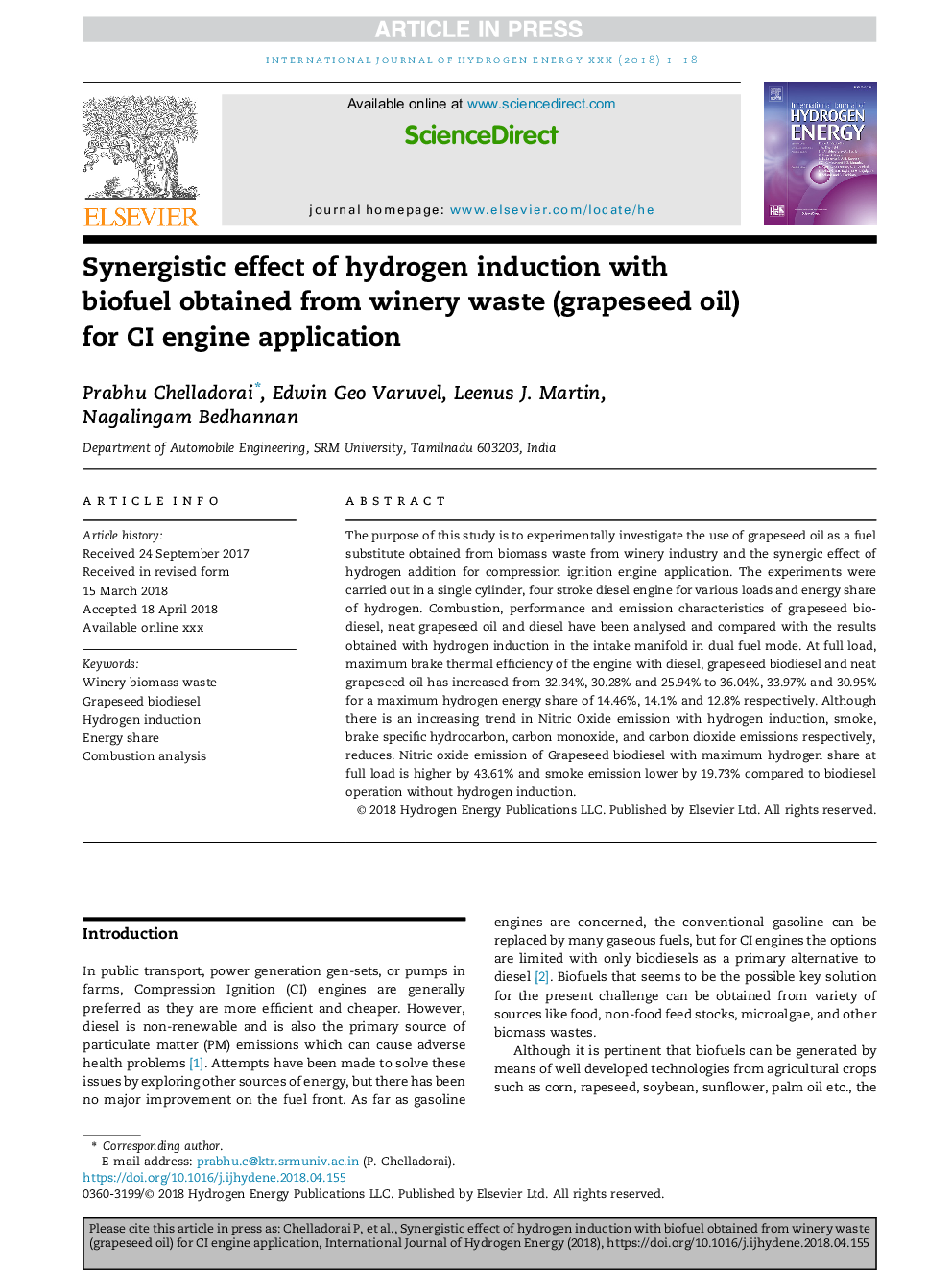| Article ID | Journal | Published Year | Pages | File Type |
|---|---|---|---|---|
| 7705658 | International Journal of Hydrogen Energy | 2018 | 18 Pages |
Abstract
The purpose of this study is to experimentally investigate the use of grapeseed oil as a fuel substitute obtained from biomass waste from winery industry and the synergic effect of hydrogen addition for compression ignition engine application. The experiments were carried out in a single cylinder, four stroke diesel engine for various loads and energy share of hydrogen. Combustion, performance and emission characteristics of grapeseed biodiesel, neat grapeseed oil and diesel have been analysed and compared with the results obtained with hydrogen induction in the intake manifold in dual fuel mode. At full load, maximum brake thermal efficiency of the engine with diesel, grapeseed biodiesel and neat grapeseed oil has increased from 32.34%, 30.28% and 25.94% to 36.04%, 33.97% and 30.95% for a maximum hydrogen energy share of 14.46%, 14.1% and 12.8% respectively. Although there is an increasing trend in Nitric Oxide emission with hydrogen induction, smoke, brake specific hydrocarbon, carbon monoxide, and carbon dioxide emissions respectively, reduces. Nitric oxide emission of Grapeseed biodiesel with maximum hydrogen share at full load is higher by 43.61% and smoke emission lower by 19.73% compared to biodiesel operation without hydrogen induction.
Keywords
Related Topics
Physical Sciences and Engineering
Chemistry
Electrochemistry
Authors
Prabhu Chelladorai, Edwin Geo Varuvel, Leenus J. Martin, Nagalingam Bedhannan,
